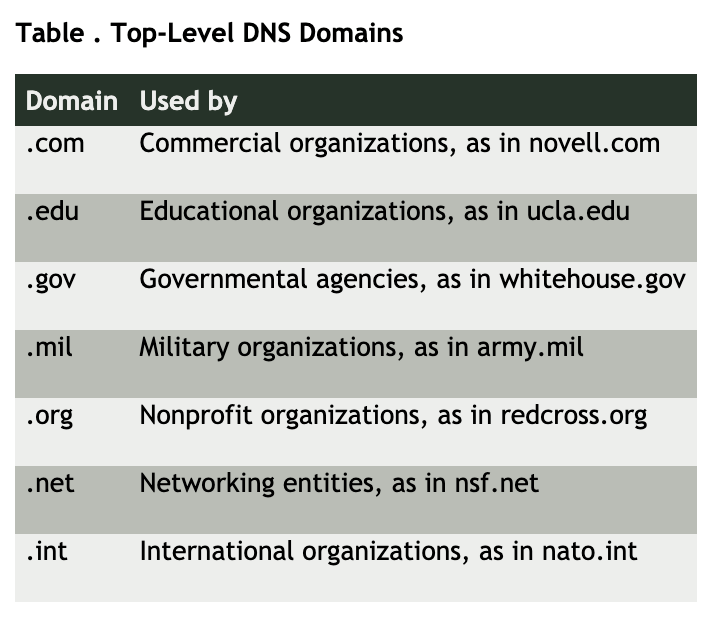Your website’s address is made from two distinct parts. The first is the hostname, your unique name on the Internet, and a way to present yourself among the many brands you’re trying to outcompete. The second, smaller part is the domain extension.
While it might seem insignificant, that short string of seemingly random characters is what gives your company legitimacy and authority on the Internet. It’s what allows you to be truly unique – the domain extension, also known as a top-level domain (TLD), depending on where it is in the domain name system (DNS) hierarchy.
The domain extension is used to categorize a website by location or purpose, and five extensions sit above all others.

However, today you’ll learn about the three most common TLDs: .com, .net, and .org. So that you can choose the right domain name and present your company in the best way possible.
The .com Domain Extension
The .com TLD is the most popular and widely used across the Internet. It was introduced as one of the first domains in 1985, representing the word “commercial.” While its intended purpose was to be used as a domain for all commercial businesses, its ubiquity led to more general usage. It even lent its name to the entire dot-com bubble in economics, which is still widely used as an example or reference in discussions involving computing or the Internet.
The .com extension is currently used by 37 – 52 percent of all websites worldwide, as statistics vary between sources. What is clear, however, is that it stands far above any other TLD. A potential customer is more likely to type a business name with a .com extension regardless of whether it uses that TLD.
The reputation of the .com TLD means that sites often have to fight to obtain the appropriate domain name. New-emerging businesses may not have the desired domain name available if they intend to use .com as their extension.
But even without the use of a .com, it’s still possible to enjoy a successful venture when using other TLDs. Just make sure a competitor doesn’t have a similar name registered under the .com domain extension.
If a company operates under a similar .com name, you’re probably better off changing your entire naming strategy. Otherwise, you risk inadvertently sending your customers to the competition due to common spelling errors and autofill suggestions.
The .org Domain Extension
This TLD was previously used exclusively for non-profit organizations until restrictions were lifted last year.
As one of the original seven TLDs introduced in 1985, it remains relatively unused. It’s used by 4.5 percent of all websites on the Internet, placing it among the top 10 TLDs worldwide. Today companies that use .org include non-profits, educational facilities, open-source projects, health organizations, NGOs, and commercial businesses.
The relative strength and age of .org can make any company using it appear more legitimate and trustworthy, especially considering the increased security. The .org domain extension is part of DNSSEC (Domain Name System Security Extensions), a security protocol for safeguarding Internet communications.
Even though more hostnames might be available for .org than .com, be wary of trying to use .org for profit-oriented businesses. That’s because .org is still perceived by many to be a non-profit oriented TLD. Some customers may expect the website to behave as such.
Failing to disclose that your .org domain name is used for commercial purposes might cause a severe backlash and affect brand reputation.
The .net Domain Extension
Similar to .org and .com, .net (‘network’) was one of the first widely available TLDs. But its meaning has resulted in varied uses over the years. The .net extension was originally intended for information service providers or network system vendors, such as web hosting companies. However, that was never fully enforced, leading .net to become one of the catch-all TLDs.
The .net domain is the fifth most popular TLD worldwide. It’s widely used by advertising organizations, Internet service providers and often treated by many as an alternative to .com.
If your work is based around Internet access, website hosting, or online collaboration, then .net might be the perfect fit. Forums, commercial brands, donation-based or crowdfunded organizations, and even non-profits can all use the .net domain extension.
And if you’re worried about consumers mistaking your brand for another, there’s a solution for that debacle. You can prevent customers from visiting a competing business using the .com version of your domain by making .net part of your brand’s identity. For example, ‘welcome to JimBakery.net.’
By treating the TLD as part of your business name, you stand a much better chance of achieving a positive and memorable brand image. It also lowers the risk of miscommunication or customer assumptions.
The Best Domain for You
Here are some factors to consider concerning TLDs.
- Commercial vs. Non-profit: .org is still vastly aligned with non-profit organizations, and .net has a history of hosting free-to-use forums and platforms. Using the .com extension clarifies that your website is commercial, and .net is usually perceived as neutral.
- Availability: Due to its popularity, .com has many domain names in use or reserved. Coming up with a unique, available name that uses the domain extension will be more challenging. On the other hand, .net and .org have more available domain names.
- Cost: Of the three, .org generally has the highest cost, although buying a specific, reserved .com hostname might cost you a lot in the beginning. Some people practice buying up .com names to resell later, leading to inflated prices.
- Mobile UI: Most modern smartphones have their autocorrect systems set to put .com at the end of website names rather than any other TLDs. Therefore, it’s the best choice if your audience primarily uses smartphones to access the web.
- Widen the reach: If possible, buy both a .net and .com domain name. Since .net is relatively cheap compared to .com, you can extend your brand’s online presence by linking the two domains together. That will prevent a potential competitor from acquiring the .net version.
- Try alternatives: Other domain names (usually country-code or ccTLDs) are typically up for sale and most commonly used for specific purposes. For example, .tv is the domain name of the country of Tuvalu, but we most commonly associate it with television. Fun fact: 9% of the country’s income came from royalties on the domain extension.
Can Your Domain Extension Influence SEO?
The domain extension you choose can affect your rankings but not in the way most people expect. Search engines don’t show preference to any one particular TLD. Instead, the algorithm(s) aims to rank the most relevant web pages above others.
For example, someone who searches for “B2B coach” is likely to see more .com domain names on the search results. However, a person that searches for “B2B coach Canada” will likely get more relevant web pages using the .ca ccTLD.
So while it may appear that search engines prefer one TLD over another, that’s not true. Search engine algorithms look at various factors to determine the most relevant pages for a given query. Sometimes, the TLD may be a factor in the ranking decision.
An Important Choice
It may not seem that important, but the three-letter extension on your domain name is essential. It can mean the difference between startup success and a failed business decision. So before starting a company, one of the first decisions is to come up with a resonant domain name – something that encompasses what your brand intends to do.
To that end, the choice between the three most popular open TLDs can be crucial in developing the online presence you need.

I’m a freelance copywriter and SEO specialist. I aim to empower individuals and businesses with impactful marketing solutions and insights. In my downtime, I recharge by embracing the beauty of nature or cherishing moments with my loved ones. If you found value in this post, please consider sharing it.
Want a heads-up once a week whenever a new article drops?





